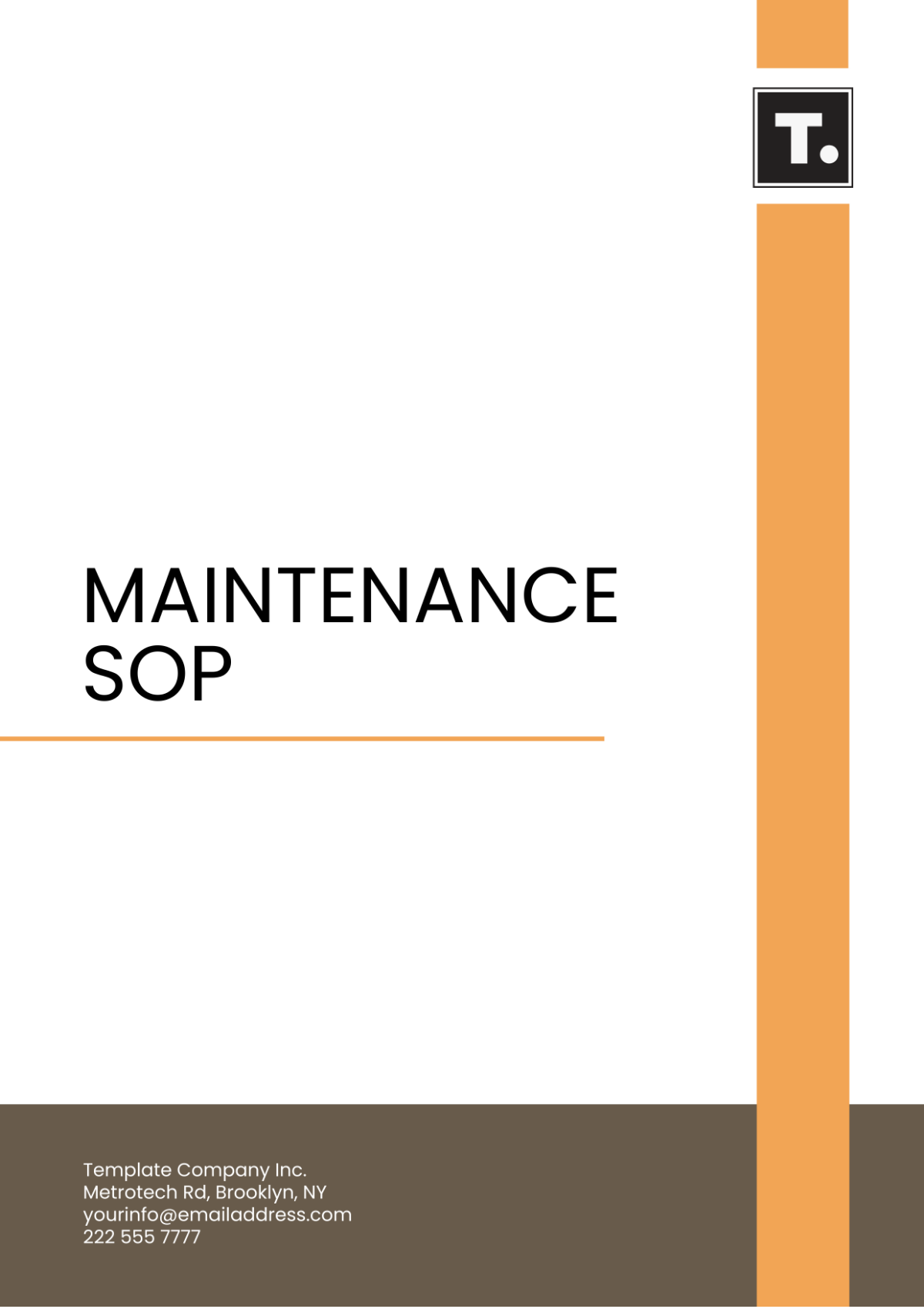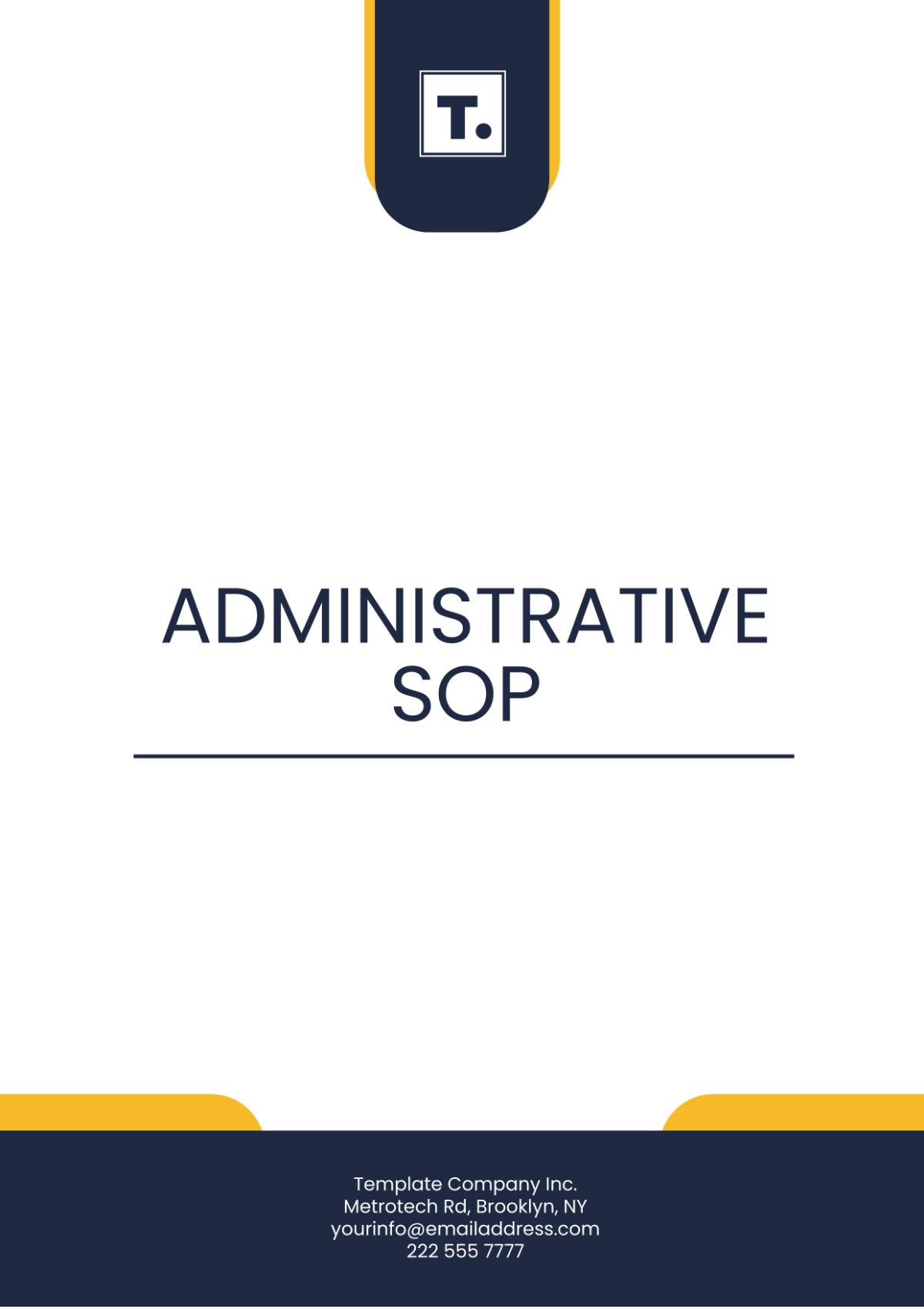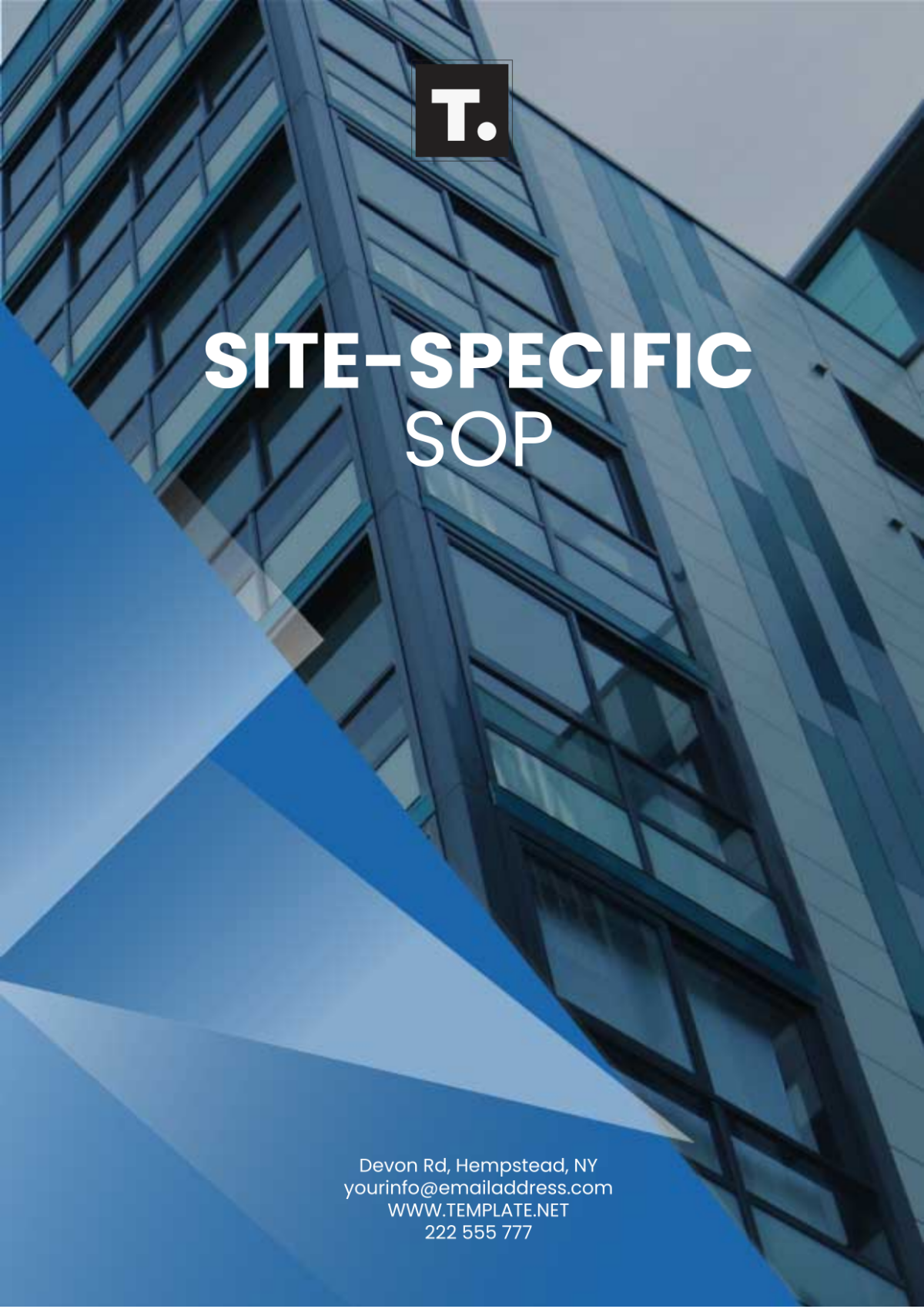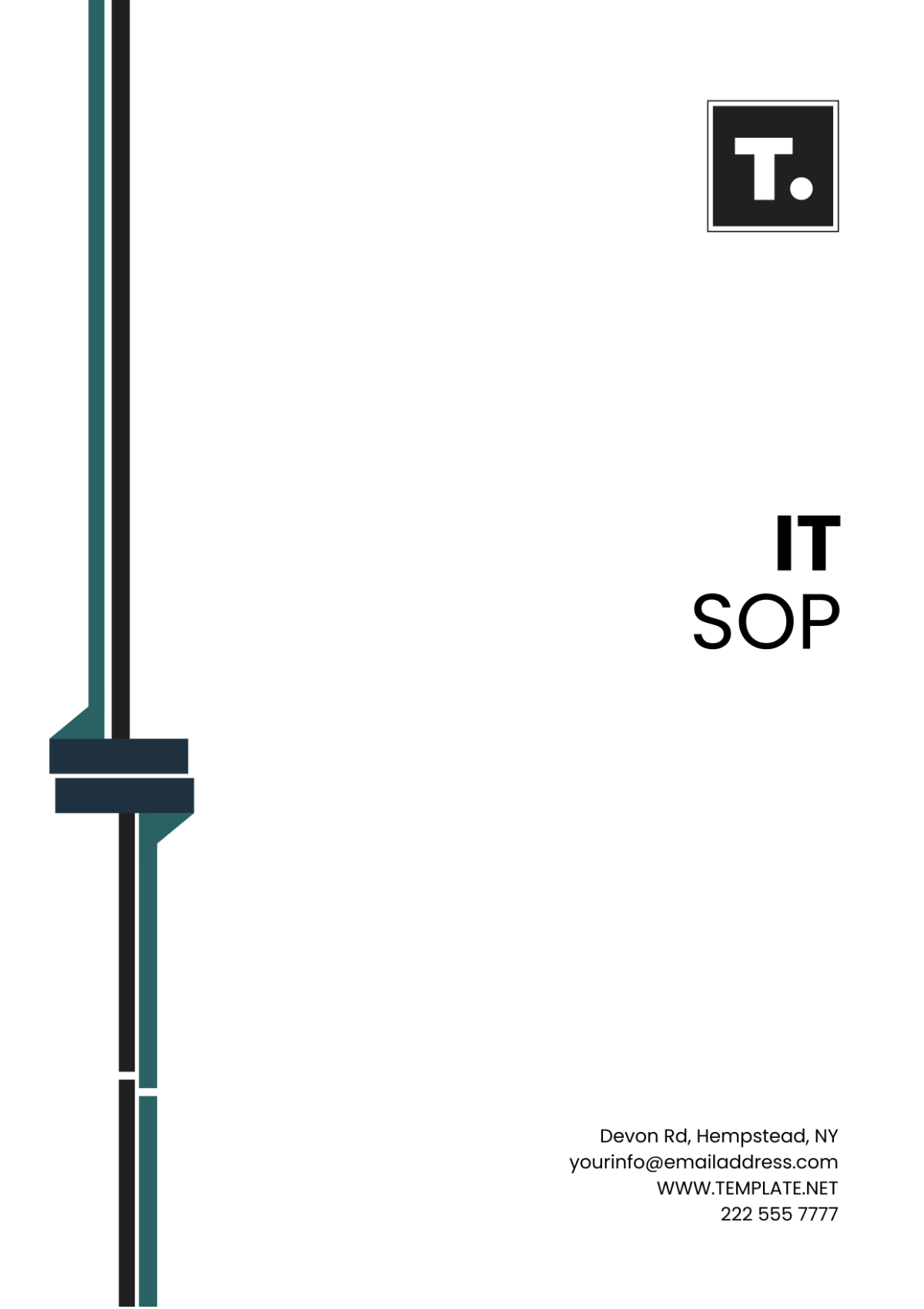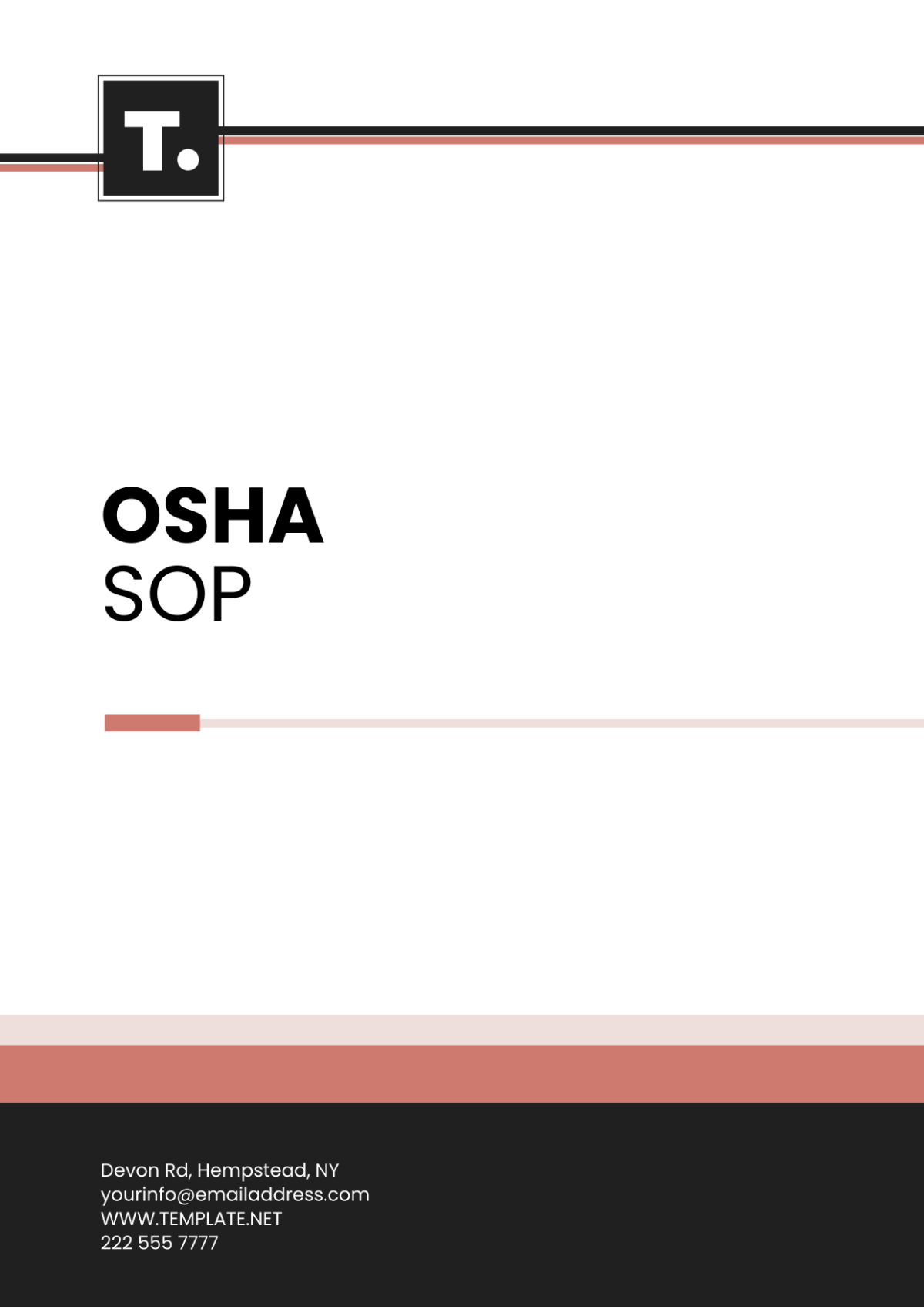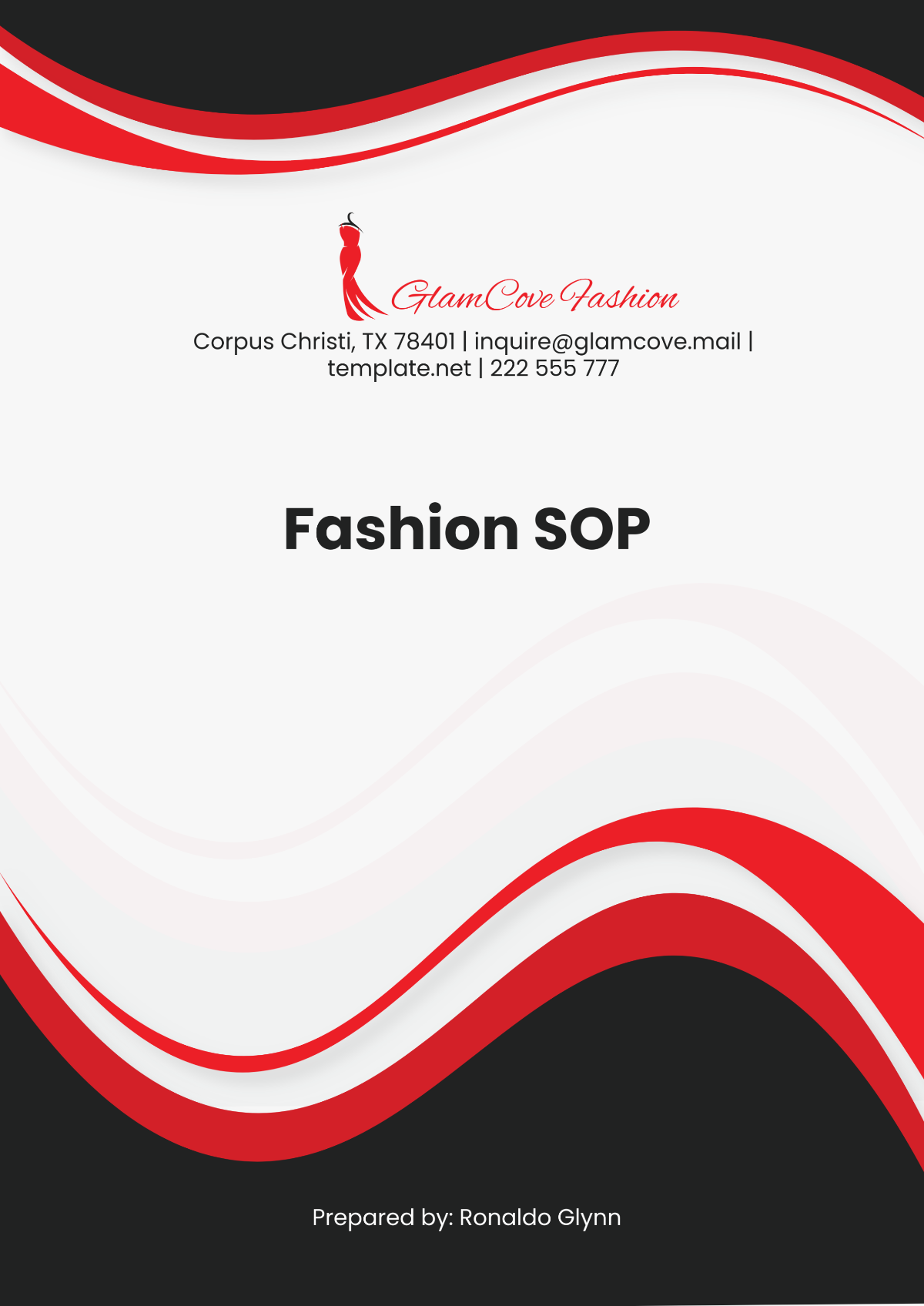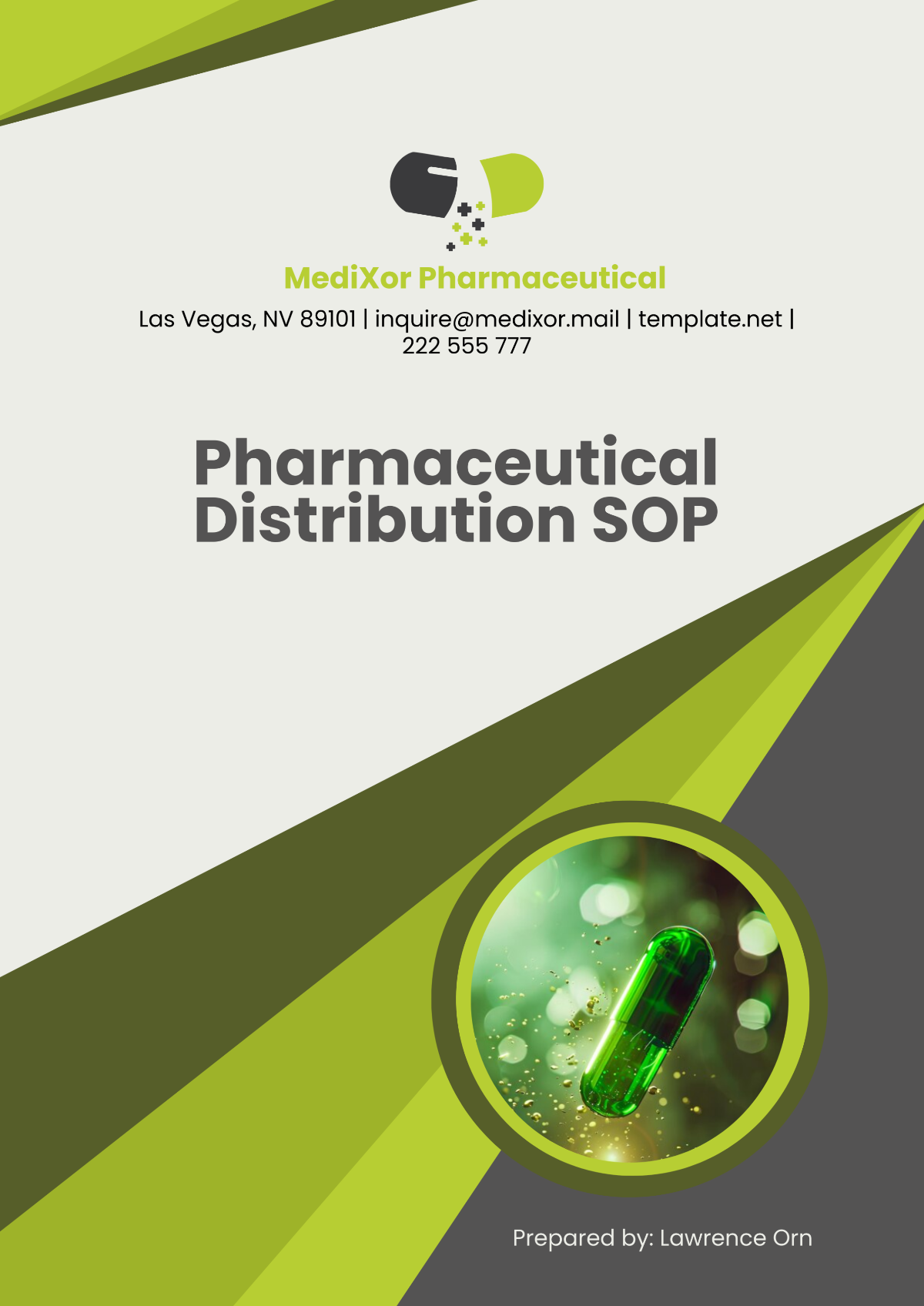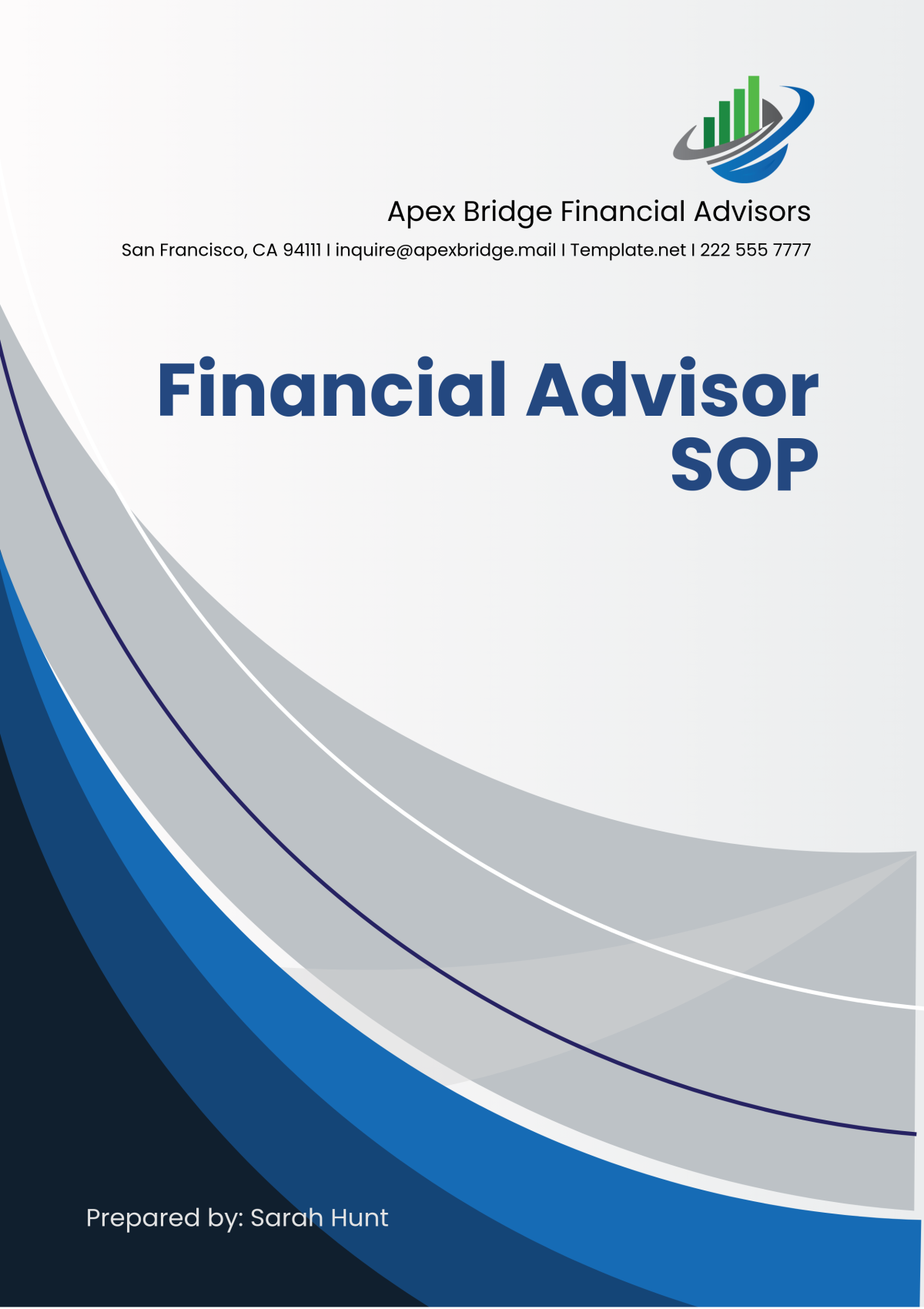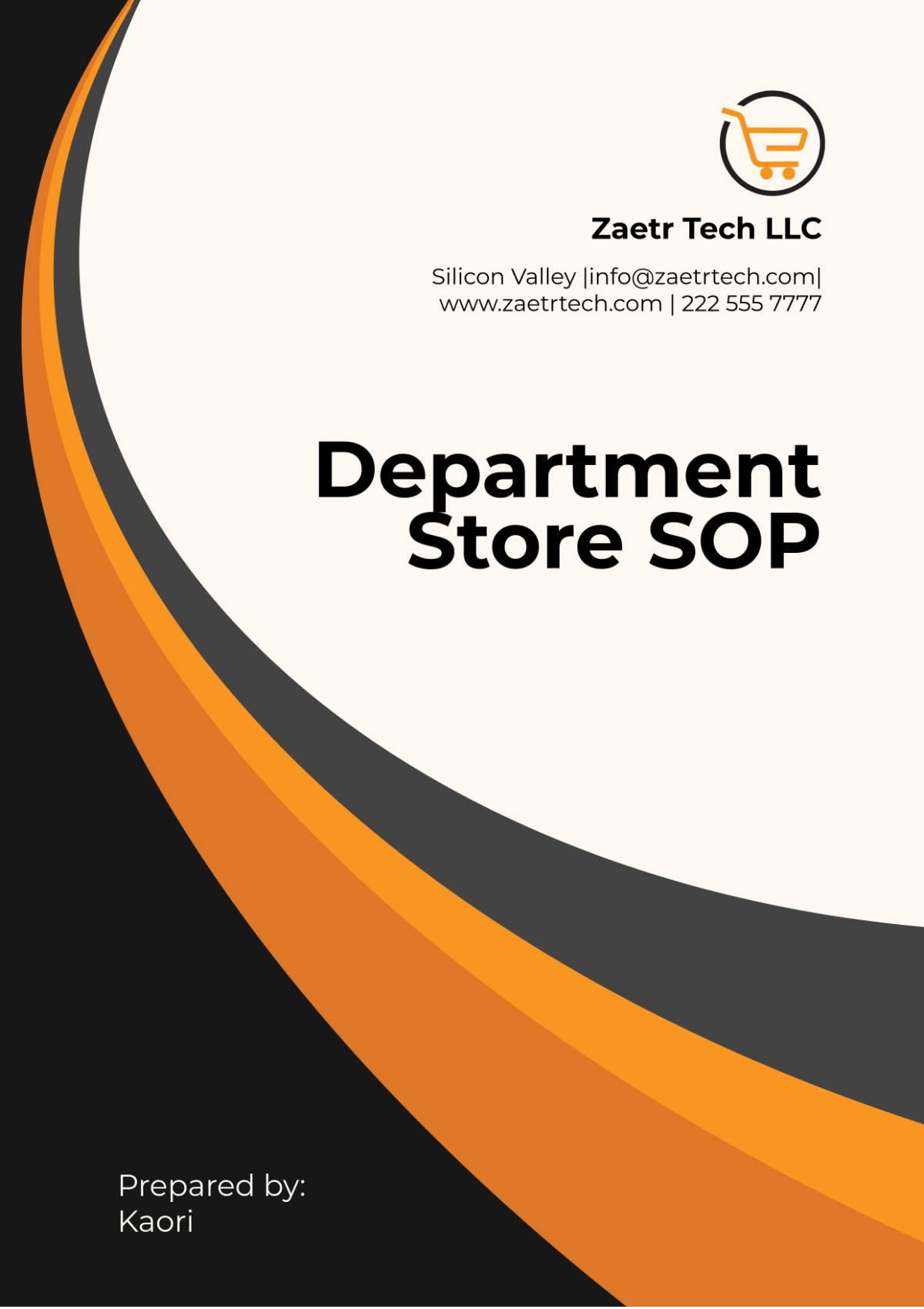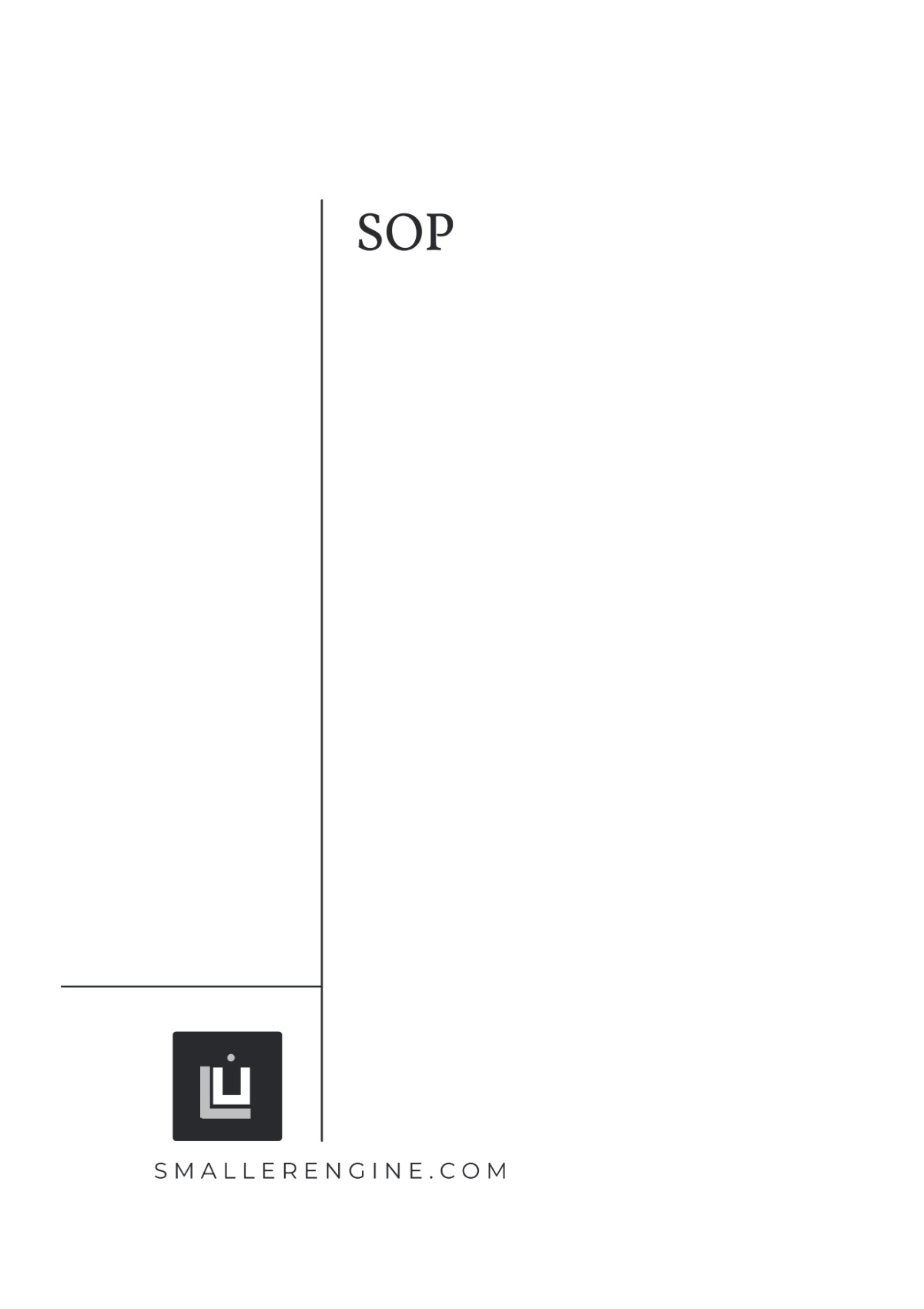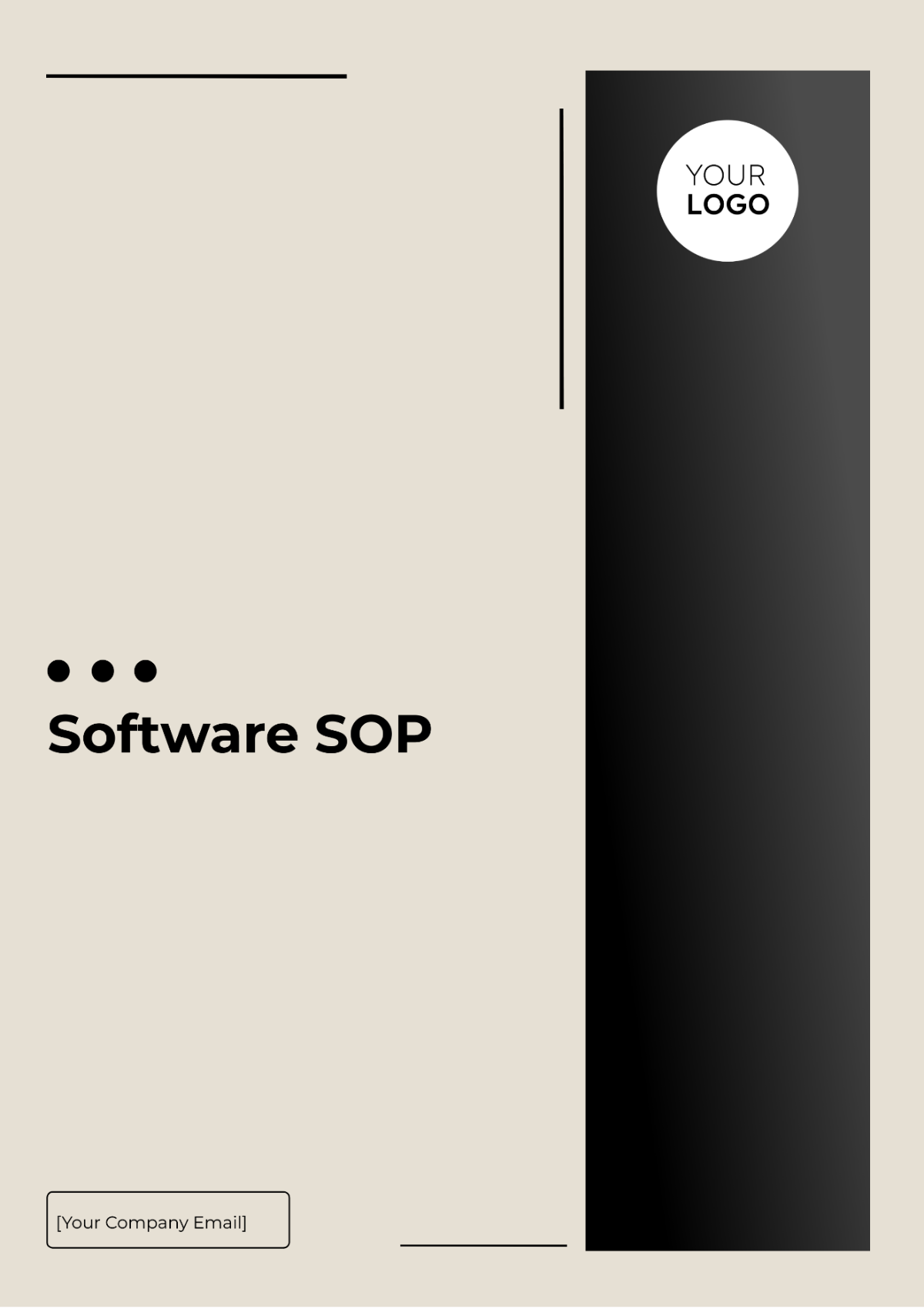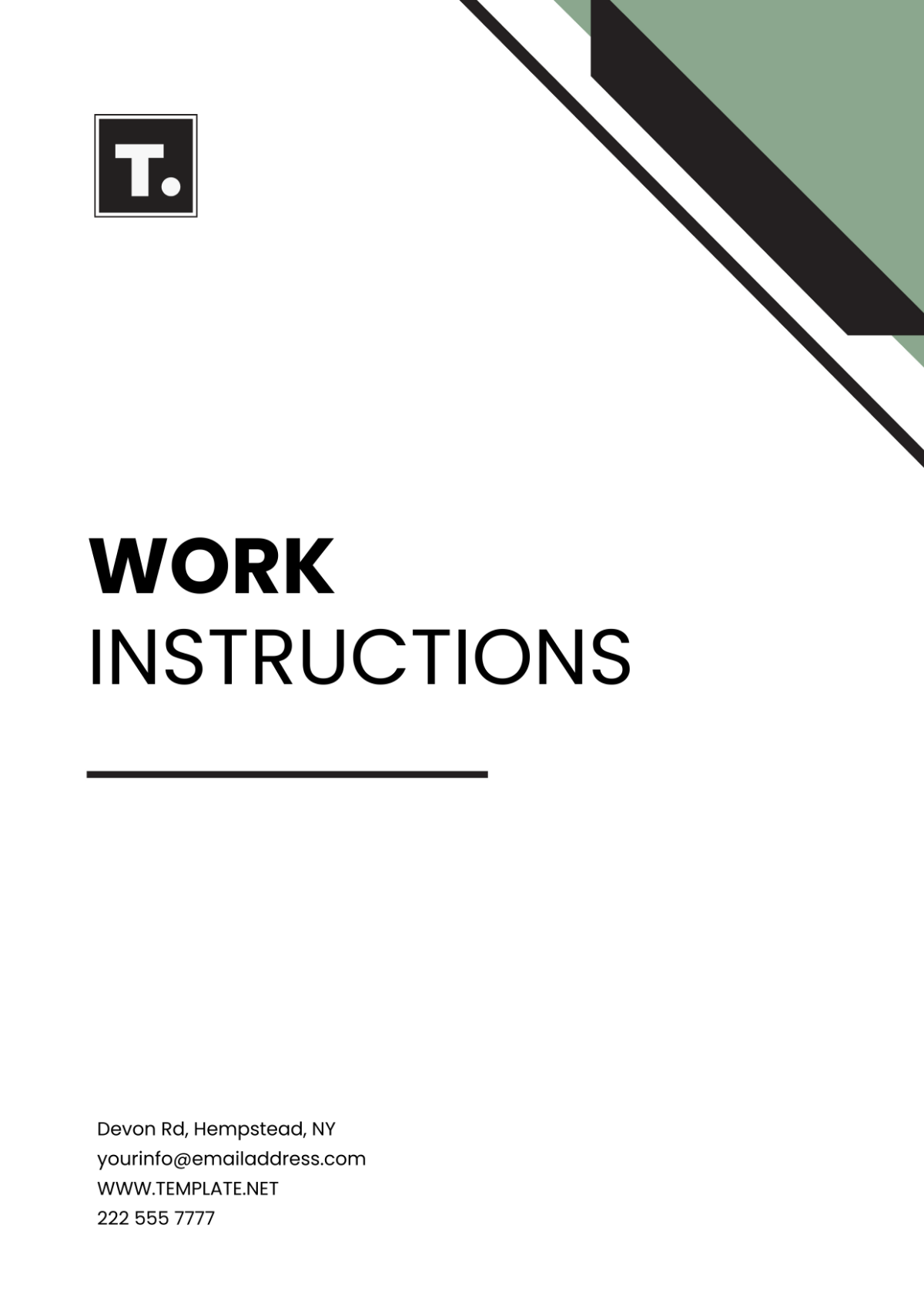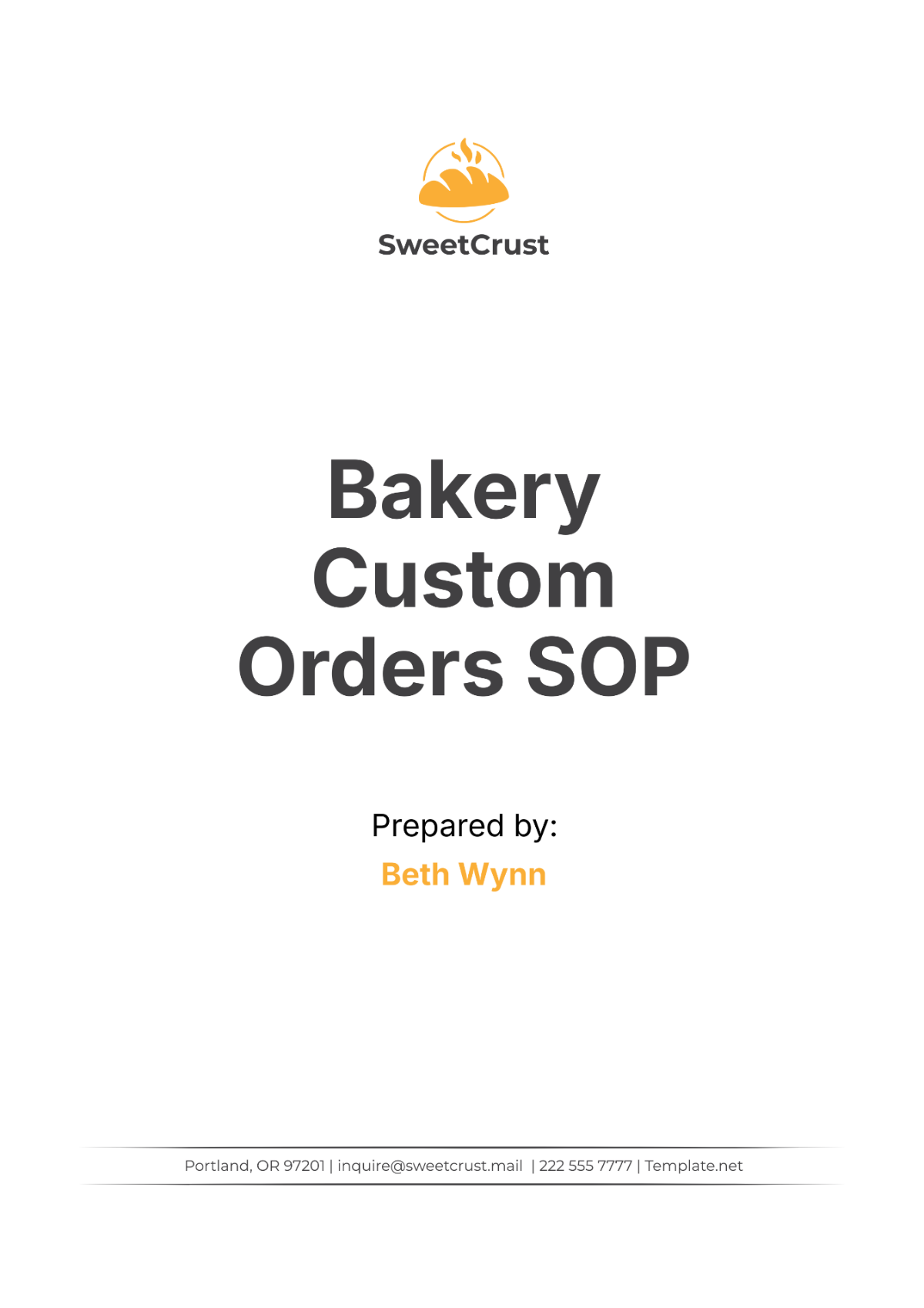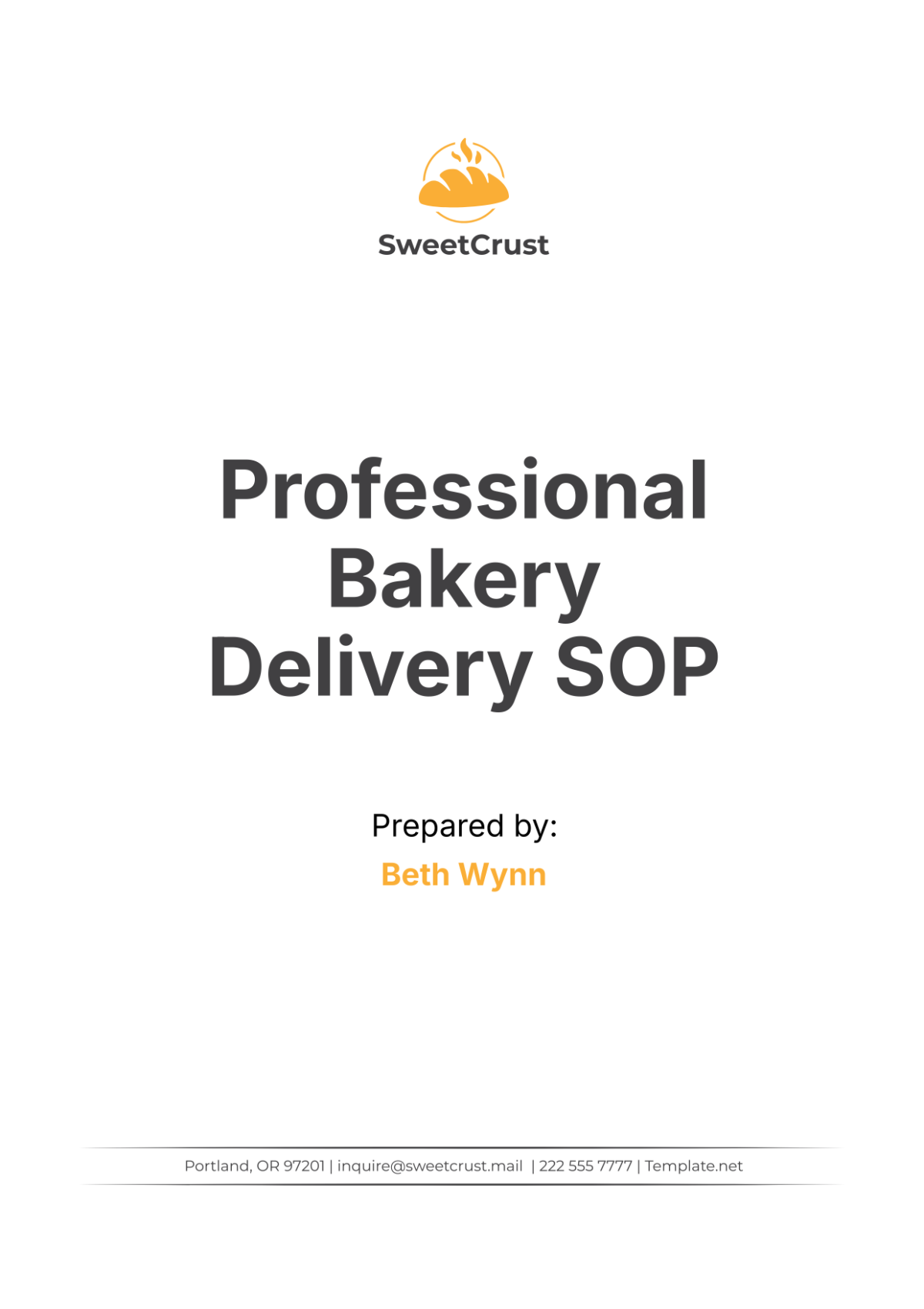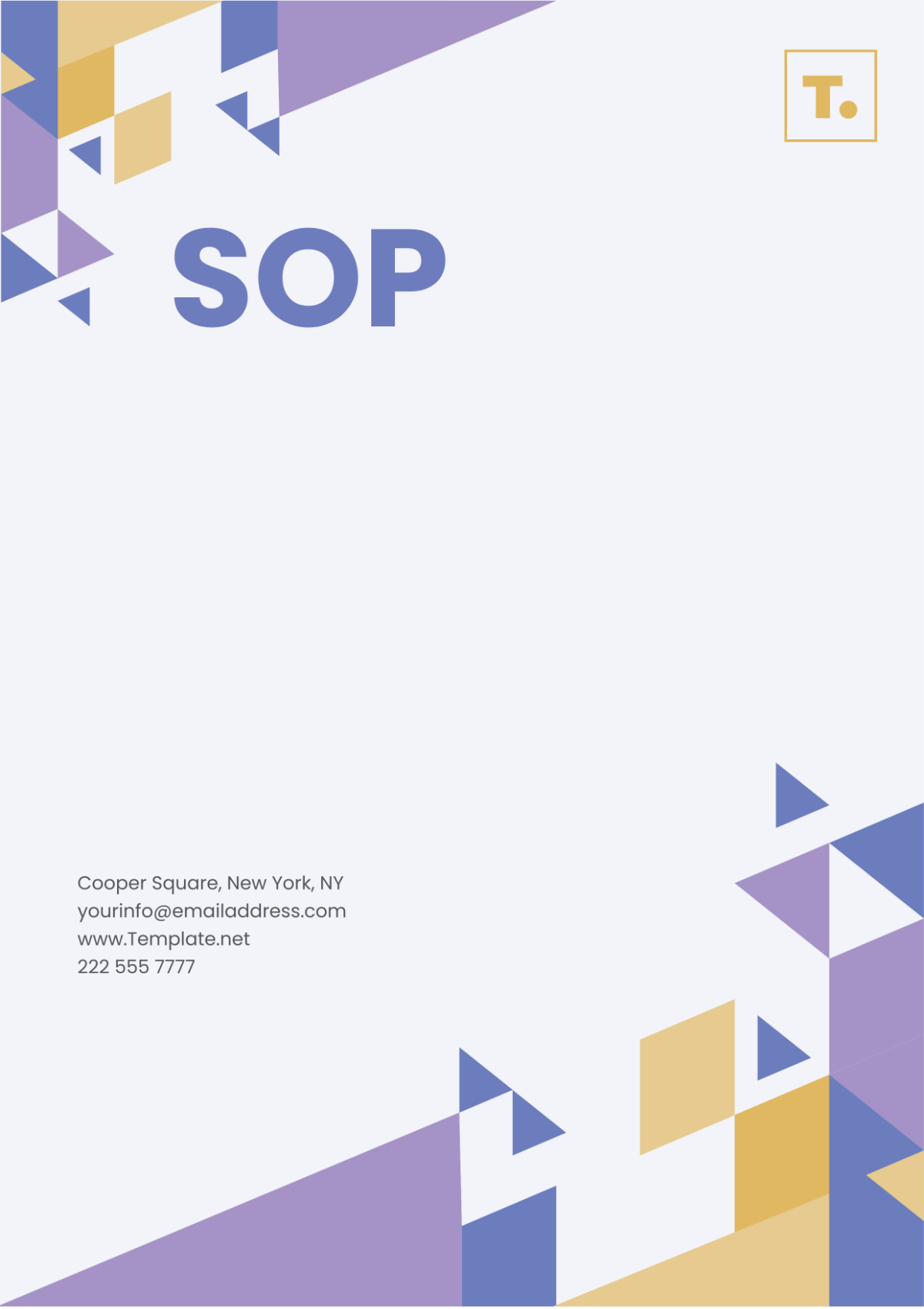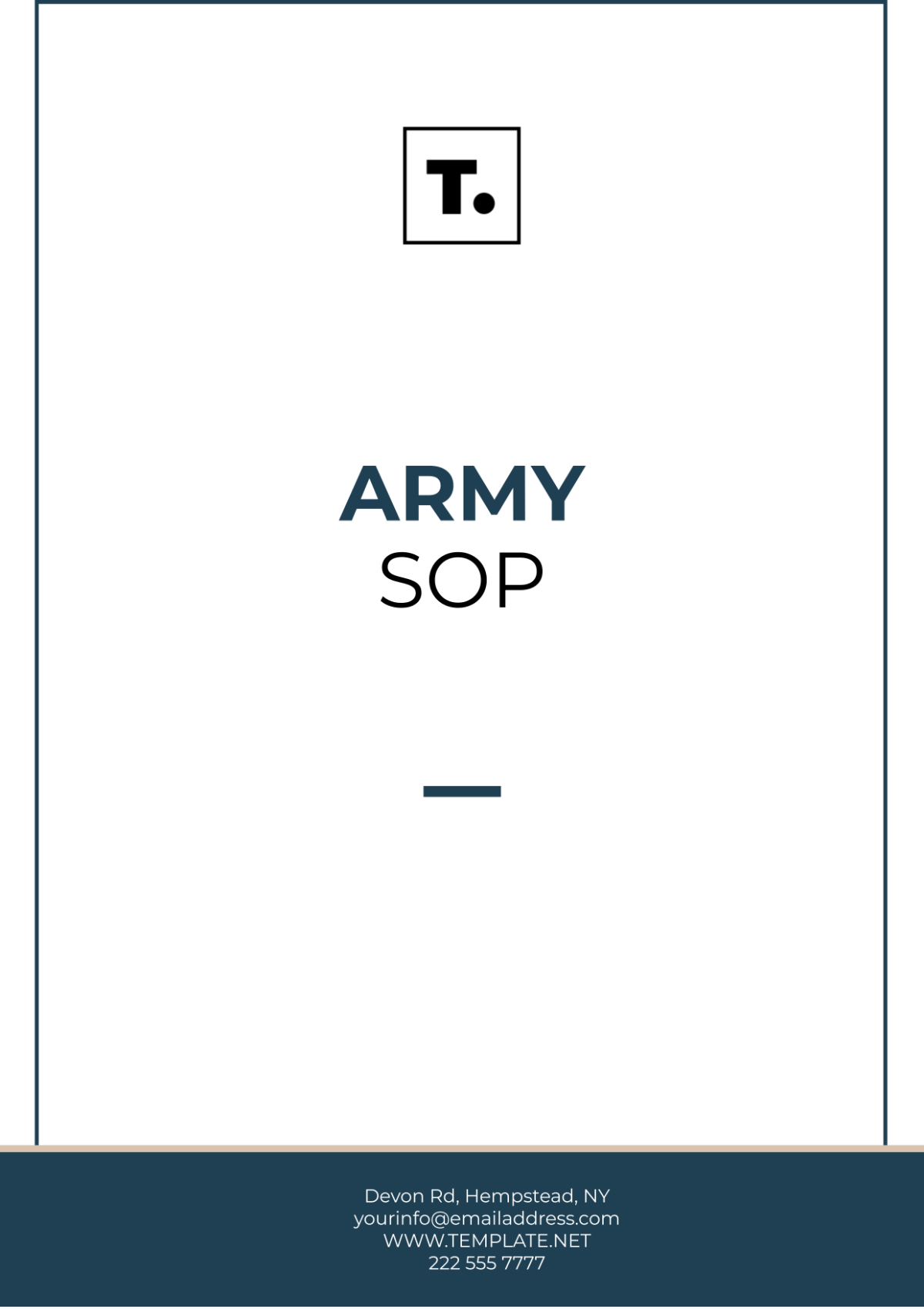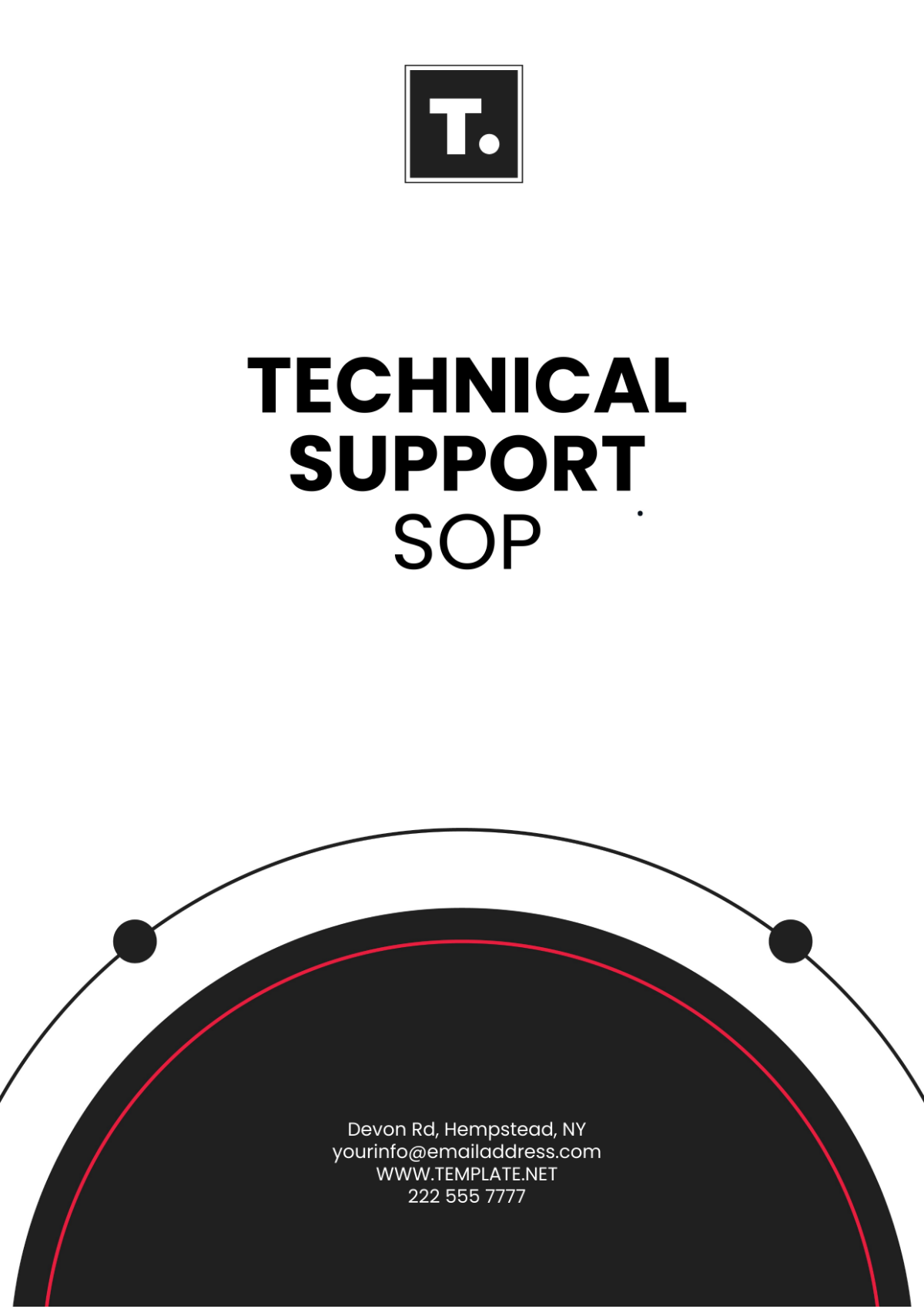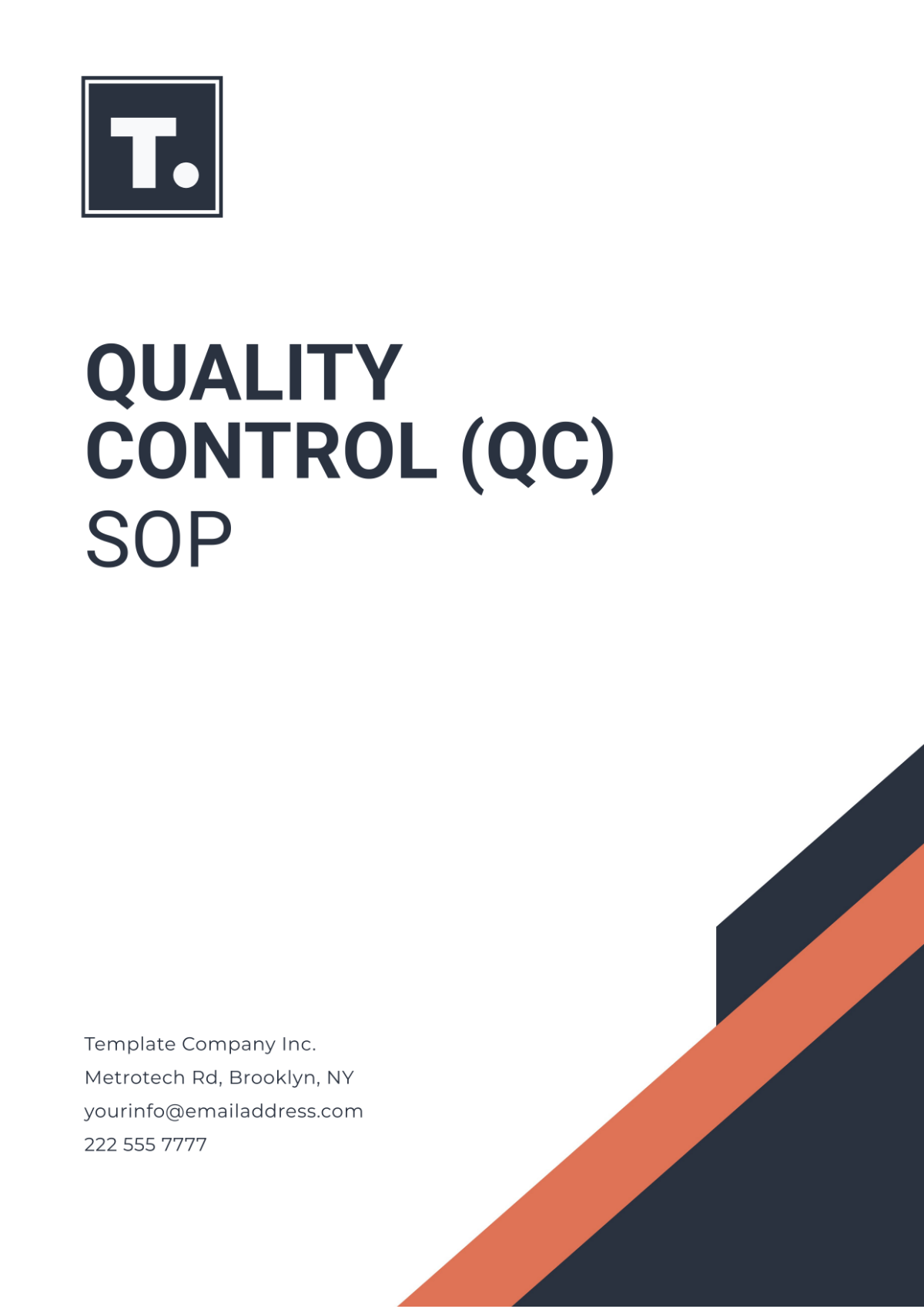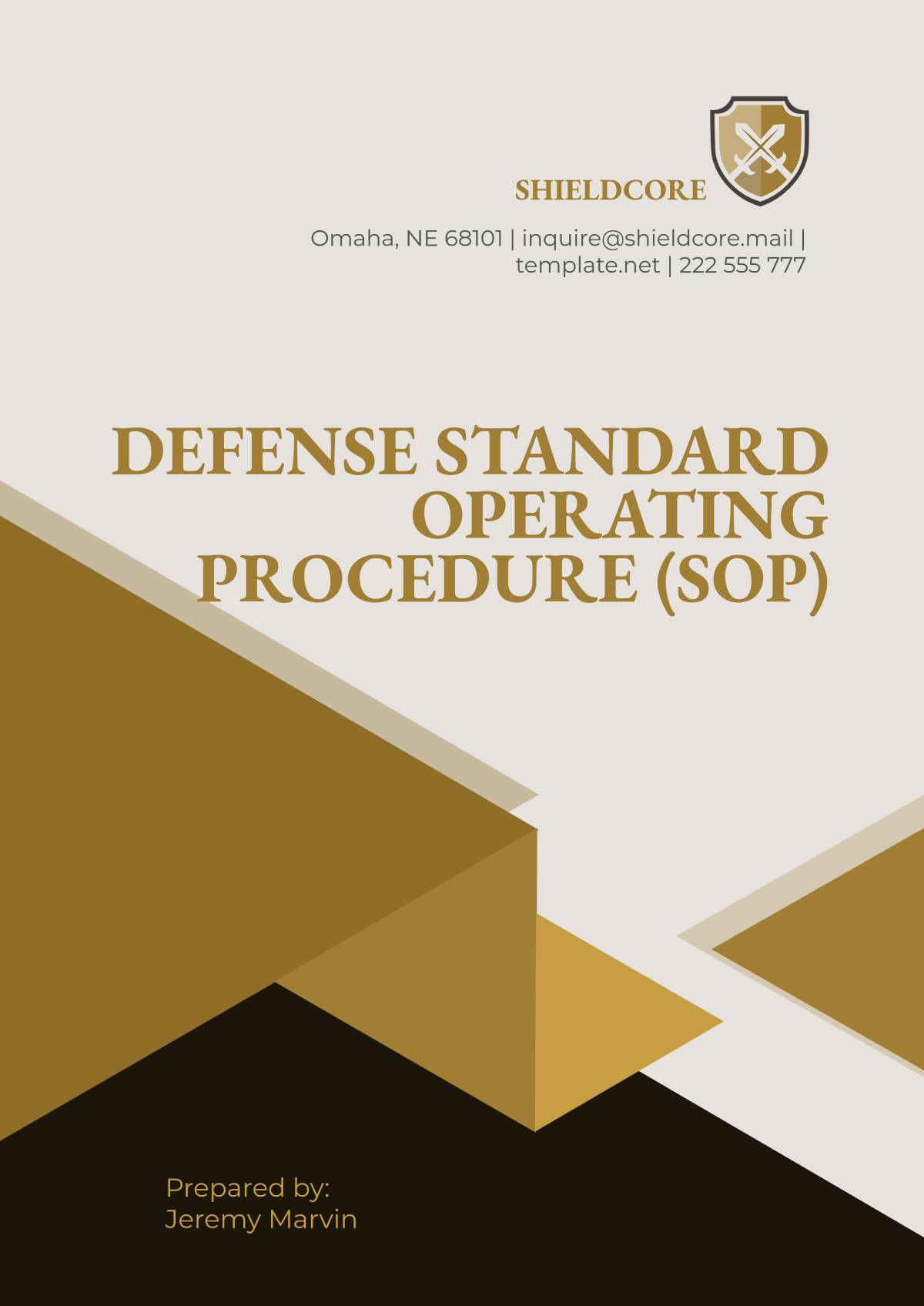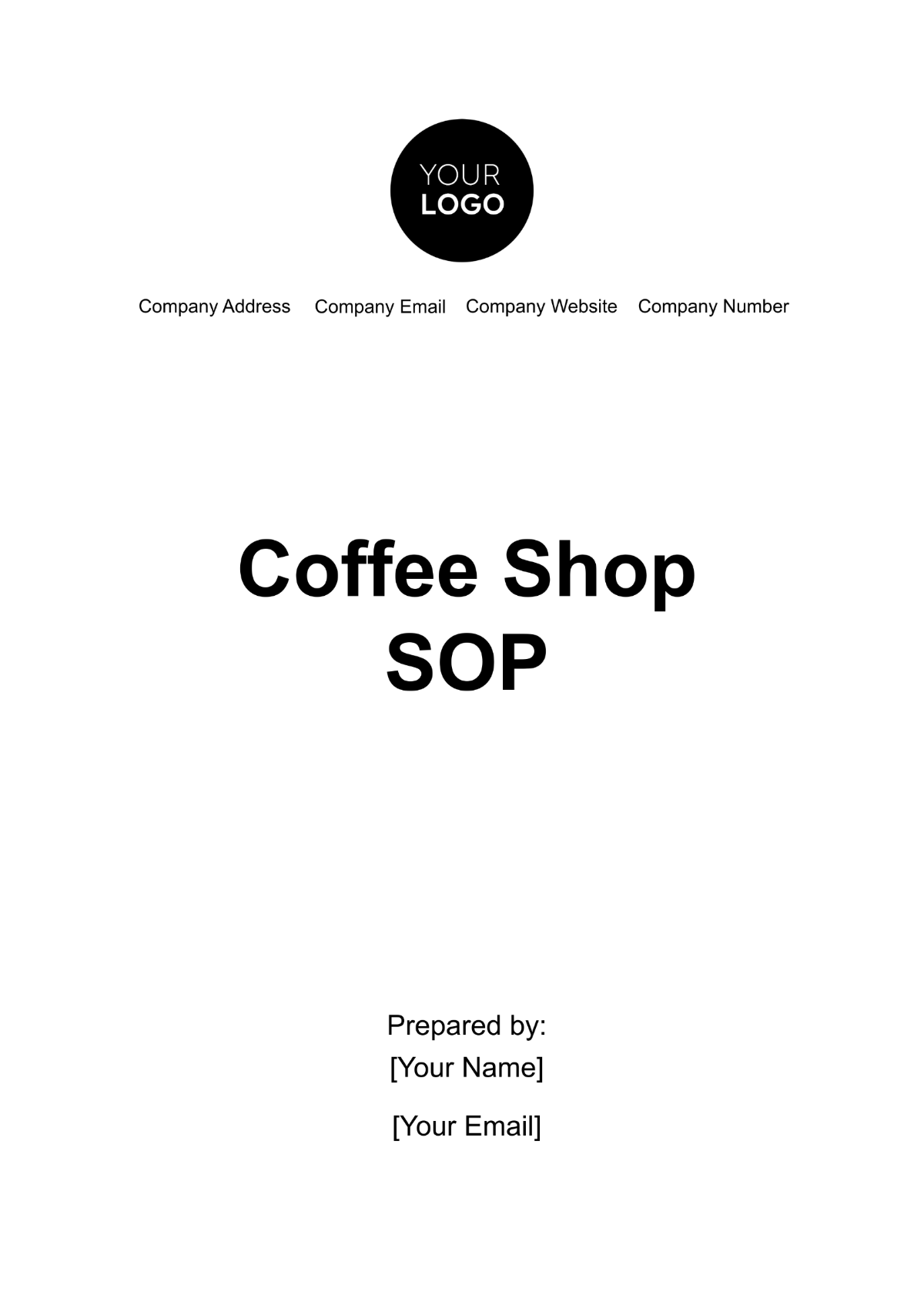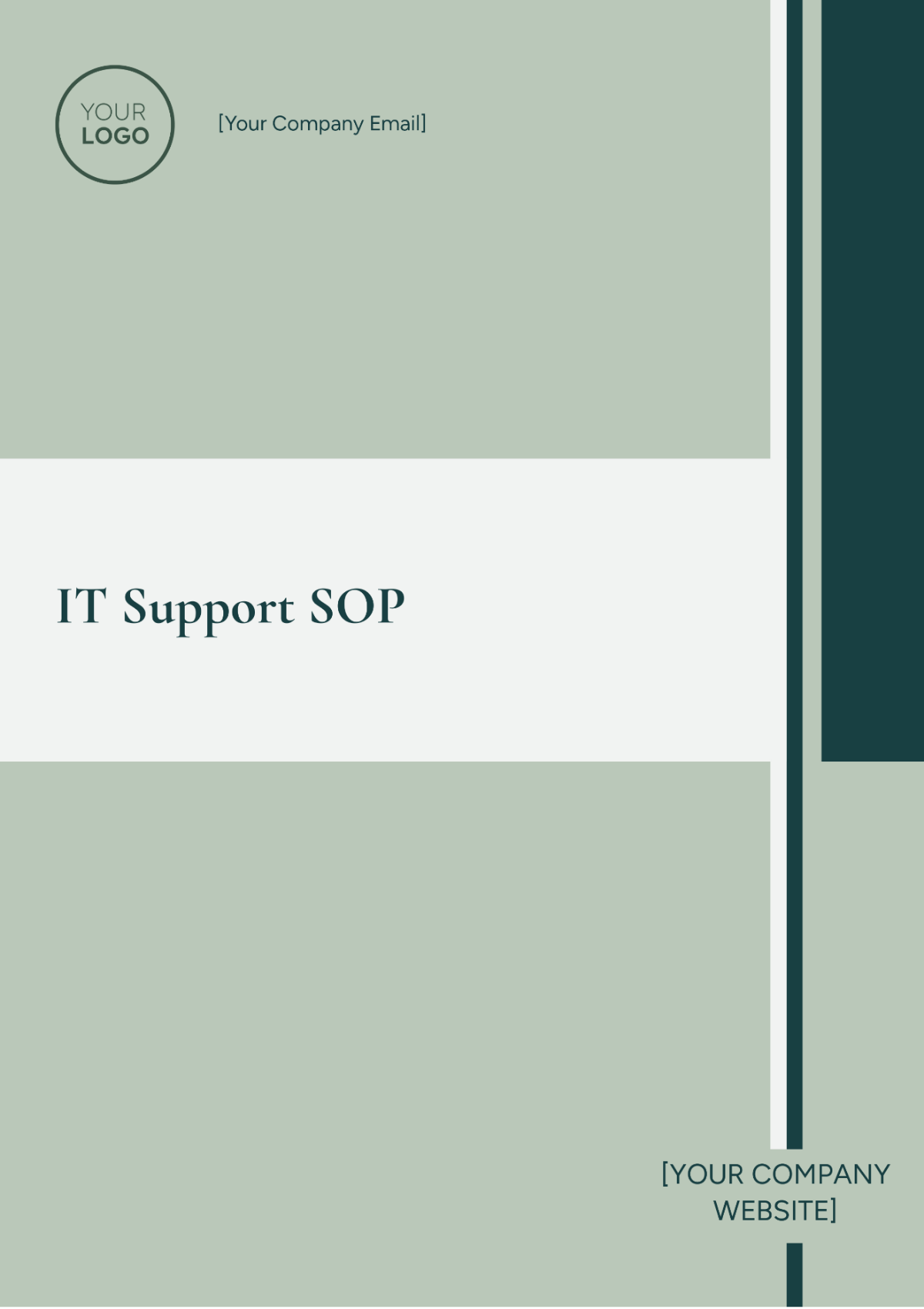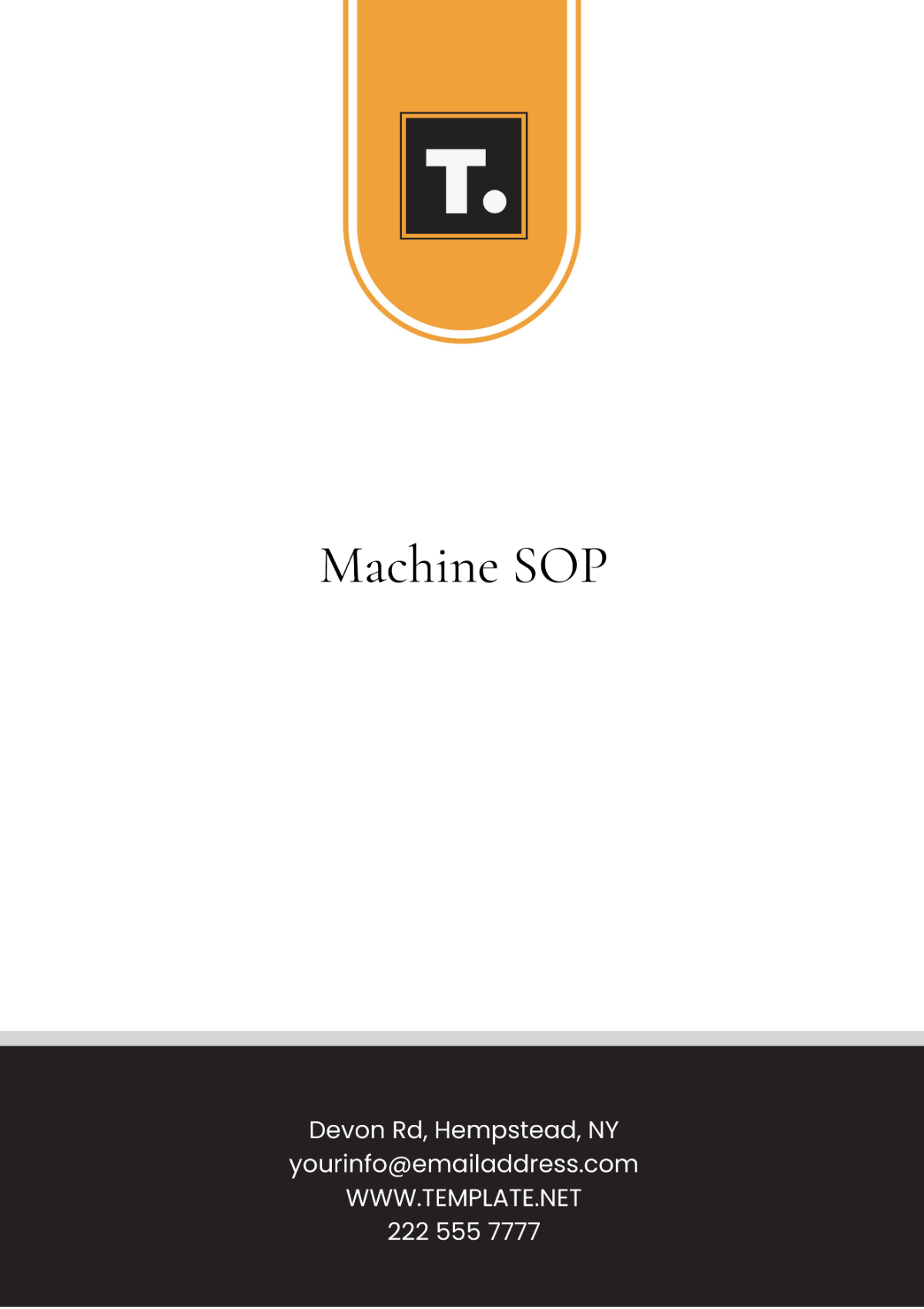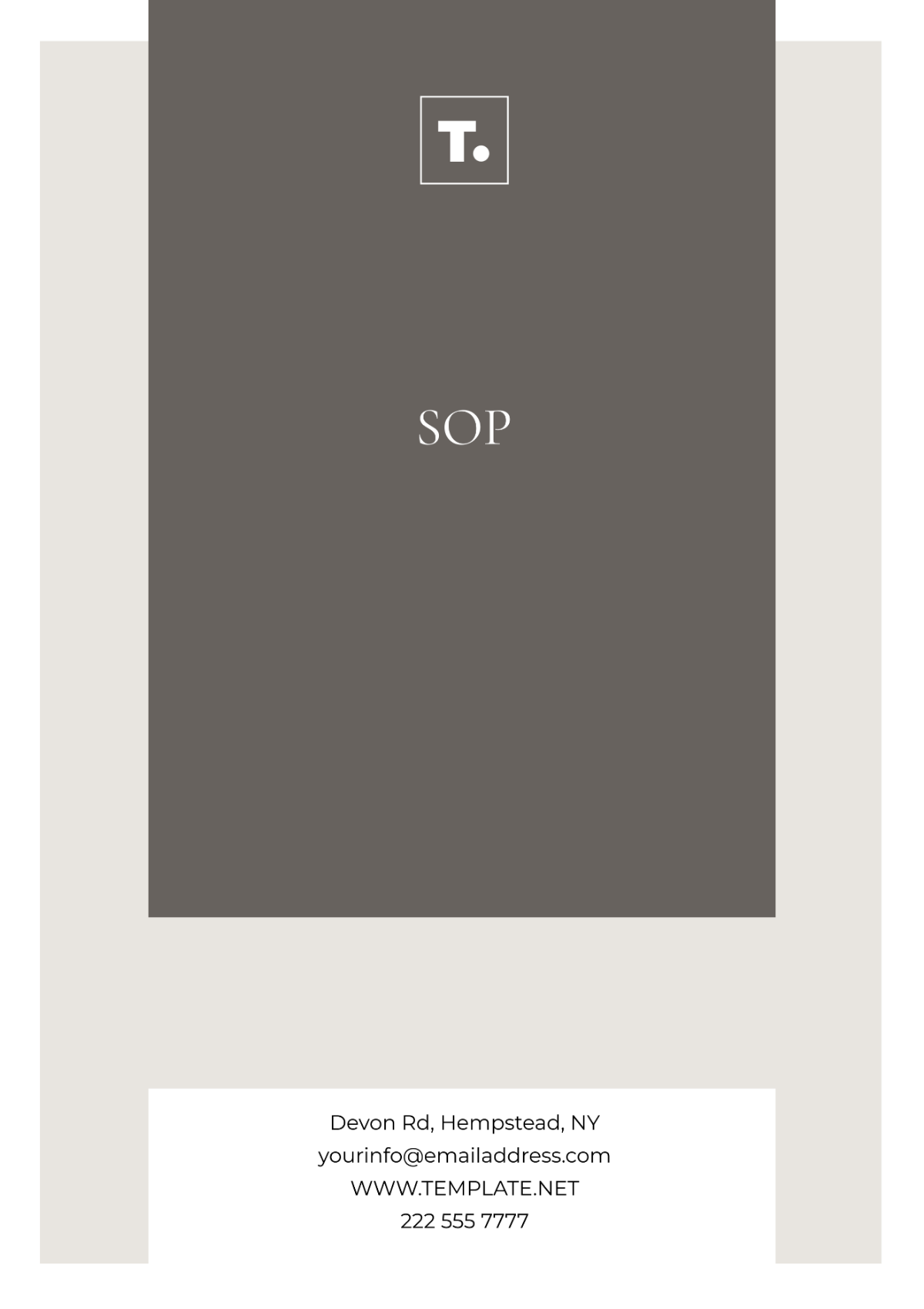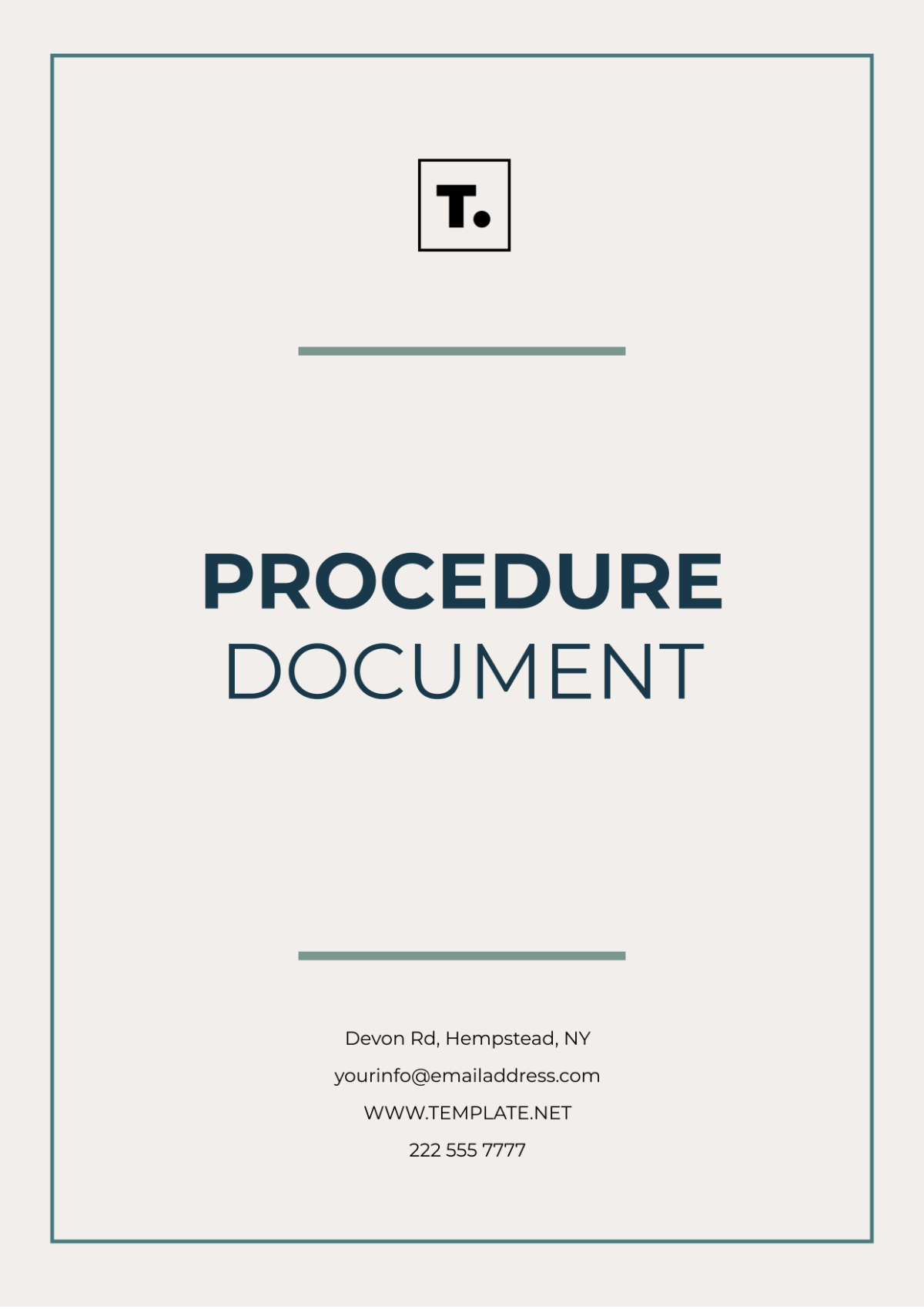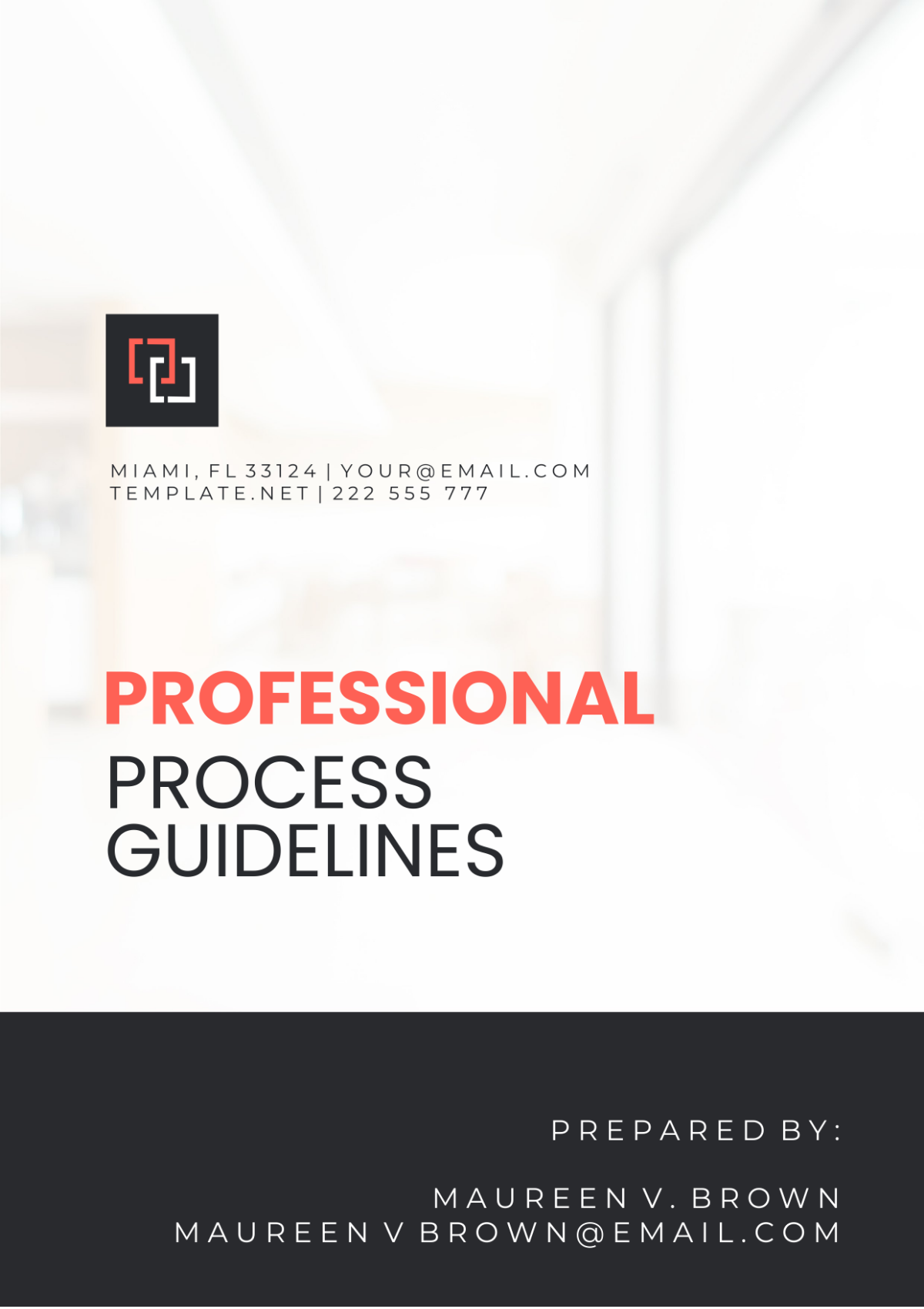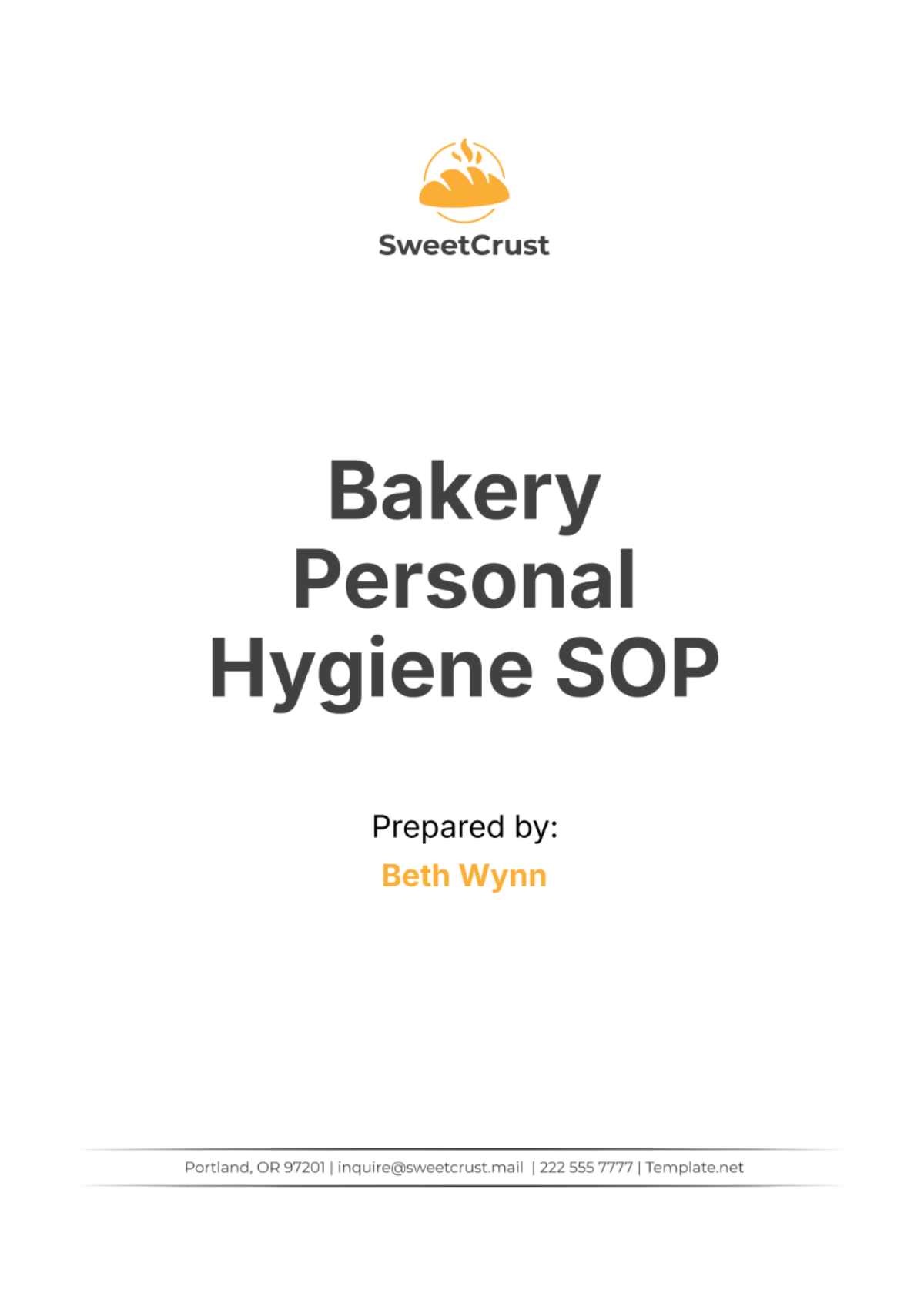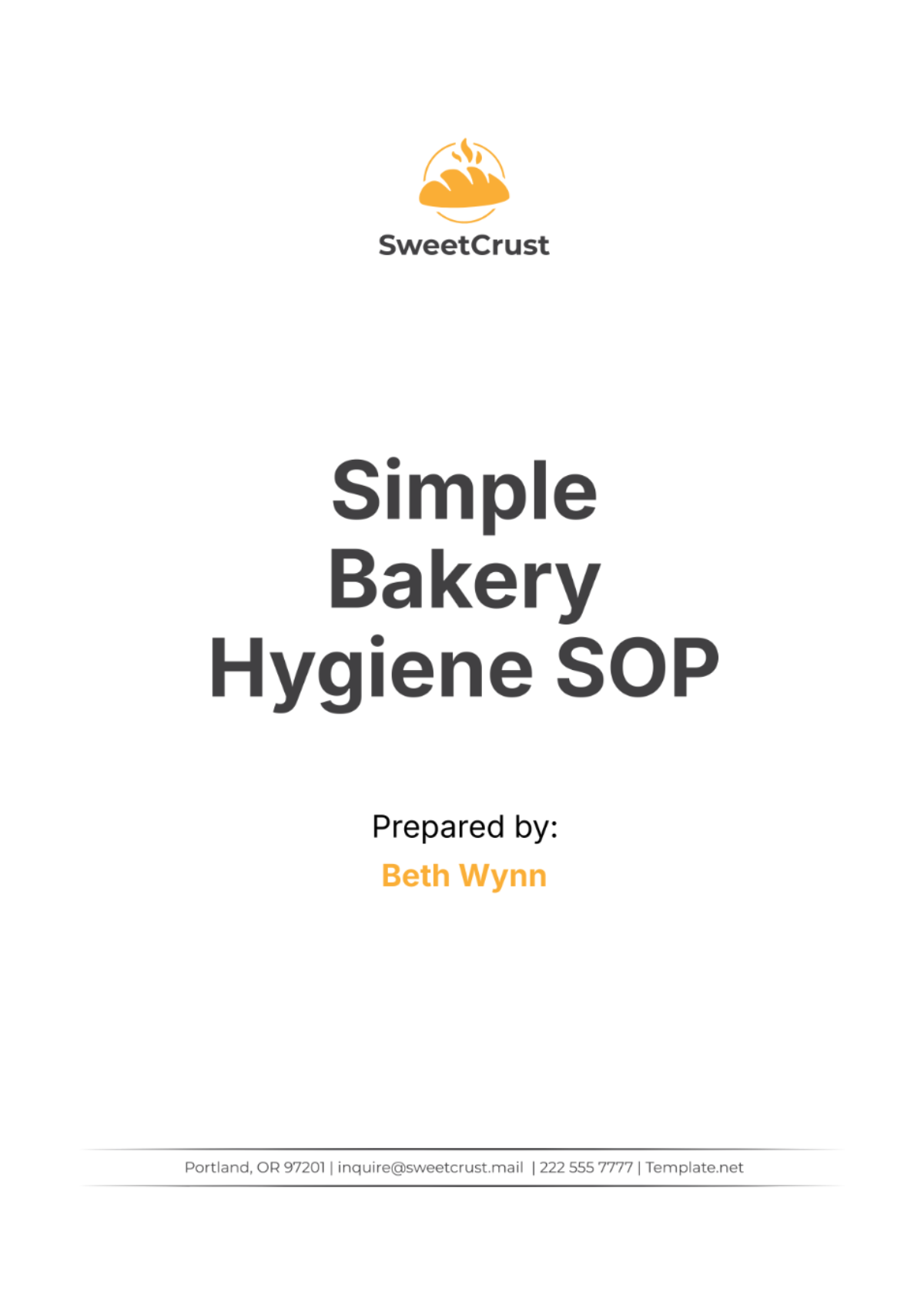Sales Collateral Development SOP
ABOUT THE SOP
This Standard Operating Procedure (SOP) embodies [Your Company Name]'s commitment to excellence in every aspect of our sales collateral creation, from initial concept to final distribution. It serves as a foundational document, providing a structured approach for the ideation, design, execution, and management of sales materials that play a pivotal role in our marketing and sales strategies. The SOP is meticulously designed to streamline the collateral development process, promoting efficiency and cohesion across various departments and ensuring every piece of material reflects our brand's high standards and core values.
By establishing clear guidelines and standardized procedures, this SOP aims to mitigate inconsistencies, reduce errors, and accelerate the production timeline, thereby enhancing the overall effectiveness of our sales initiatives. It ensures that all team members, regardless of their role in the process, have a clear understanding of their responsibilities and the quality expectations of [Your Company Name]. This collective effort is crucial in producing compelling, informative, and visually appealing sales collateral that captures the essence of our brand and resonates with our diverse clientele.
TARGET AUDIENCE
The Target Audience section of this SOP recognizes the diverse group of professionals within [Your Company Name] who contribute to the lifecycle of sales collateral. This includes, but is not limited to, sales strategists who identify market opportunities, content writers who articulate our value proposition, graphic designers who create visually engaging designs, and digital marketers who strategize on the collateral's distribution. Each role is crucial in the collateral development process, and this SOP provides a common framework that aligns their efforts towards a unified goal.
Furthermore, this SOP acknowledges the evolving nature of sales and marketing roles and the collaborative synergy required among team members. By identifying the target audience for this SOP, we ensure that every individual involved is equipped with the guidelines necessary to contribute effectively to the collateral development process. This shared understanding fosters a culture of excellence and innovation, encouraging team members to leverage their unique skills and perspectives in creating sales materials that not only meet but exceed our standards for quality and effectiveness.
SCOPE
The Scope of this SOP provides a comprehensive overview of the various stages involved in developing effective sales collateral, detailing the processes from conceptualization to the final distribution. This section ensures that all team members are aware of the breadth of activities covered under this SOP, facilitating a holistic approach to collateral development.
Content Creation: This step is foundational to the collateral development process. It involves the meticulous crafting of text, the selection or creation of impactful images, and the integration of multimedia elements that together tell a compelling story about our products or services. The content must be insightful, engaging, and tailored to the needs and preferences of our target audience, ensuring it delivers value and drives engagement.
Creative Design: The design of sales collateral plays a critical role in capturing the audience's attention and conveying our brand message. This phase focuses on the aesthetic appeal and functional layout of the collateral, ensuring that it is not only visually striking but also easy to navigate and understand. Design elements must align with [Your Company Name]'s brand guidelines, including the use of brand colors, fonts, and imagery, to maintain consistency across all materials.
Distribution Strategy: The effectiveness of sales collateral also depends on its strategic distribution. This involves determining the most impactful channels for dissemination, whether through print, digital platforms, social media, email marketing, or direct mail. The strategy should consider the preferences and behaviors of the target audience, ensuring that the collateral is easily accessible and reaches them at the optimal time. Additionally, the distribution plan must be agile, allowing for adjustments based on performance metrics and feedback.
By encompassing these crucial aspects, the scope of this SOP ensures a comprehensive and integrated approach to sales collateral development. It empowers team members across different functions to collaborate effectively, leveraging their expertise to produce and distribute sales materials that strengthen [Your Company Name]'s market position and drive sales success.
PROCEDURE
Expanding on the procedure detailed in the Standard Operating Procedure (SOP) for Sales Collateral Development within [Your Company Name], each step is crafted to ensure a seamless flow from conceptualization to the final distribution of sales materials. This procedure aims to further detail each phase to maximize the effectiveness and efficiency of our sales collateral creation process.
1. Need Analysis
The initial phase involves a meticulous analysis of the current market trends, direct feedback from customers, and insights from the sales team. This tri-fold assessment helps to pinpoint not only the immediate needs for new or updated collateral but also anticipates future market shifts. Objectives are set to align with overarching business goals, whether it's launching a new product, penetrating a new market segment, or bolstering brand visibility. This stage ensures that every piece of collateral developed serves a strategic purpose and is poised to make a measurable impact.
Market Trend Analysis: Utilize industry reports, competitor analysis, and market forecasts to understand the evolving landscape.
Customer Feedback Compilation: Aggregate and analyze customer feedback from various channels, including surveys, social media, and customer service interactions.
Sales Team Workshops: Conduct workshops with sales teams to gather front-line insights and identify sales process gaps that collateral can address.
2. Concept Development
Concept development is a collaborative and creative process. It begins with brainstorming sessions that bring together cross-functional teams to ideate on the vision and scope of the collateral. A creative brief is then formalized, encapsulating the essence of the project - its purpose, target demographic, key messages, and the desired call to action. This brief becomes the blueprint for content creators and designers, ensuring all subsequent efforts are aligned with the initial vision.
Cross-functional Brainstorming: Engage teams from marketing, sales, design, and product management to foster diverse ideas.
Creative Brief Creation: Develop a detailed brief that outlines objectives, key messages, tone of voice, visual guidelines, and distribution channels.
3. Content Creation
With the concept in place, the creation of content is the next pivotal step. This phase encompasses the drafting of compelling copy, design of engaging visuals, and possibly the production of multimedia elements such as videos or interactive tools. The content should not only align with [Your Company Name]'s branding guidelines but also be crafted to resonate deeply with the target audience, delivering value and prompting engagement.
Copywriting: Produce clear, persuasive text that communicates the USPs (Unique Selling Points) effectively.
Visual and Multimedia Production: Design graphics and produce multimedia content that complements the text and enhances the overall appeal of the collateral.
Content Review: Ensure all content goes through a review process to maintain quality and brand consistency.
4. Assessment & Approval
This critical phase involves a comprehensive review to ensure the collateral meets or exceeds the company's standards for quality, accuracy, and brand alignment. It includes checks for compliance with legal and regulatory standards, especially for industries where this is pertinent. Stakeholder approvals are systematically obtained, incorporating feedback to refine the collateral further.
Quality Assurance Checks: Conduct detailed reviews for grammar, brand consistency, and message alignment.
Compliance Verification: Ensure all collateral is vetted for legal compliance, particularly in regulated industries.
Stakeholder Approvals: Gather and incorporate feedback from key stakeholders to finalize the collateral.
5. Printing & Distribution
For tangible collateral, high-quality printing ensures that the physical materials reflect the premium nature of [Your Company Name]. Digital collateral is optimized for various platforms, ensuring accessibility and engagement. The distribution strategy is executed, placing the collateral in strategic channels that maximize visibility and impact.
Quality Printing: Collaborate with trusted printing partners to produce high-quality materials.
Digital Optimization: Ensure digital materials are optimized for web and mobile platforms.
Strategic Distribution: Leverage analytics to choose the most effective channels for distribution, whether digital or physical.
6. Feedback & Review
Post-distribution, the collection of feedback from both the sales team and the target audience provides invaluable insights into the collateral's performance. This feedback loop is essential for continuous improvement, helping to refine strategies, content, and design for future collateral. Analyzing engagement metrics and conversion rates can also offer a quantitative measure of success.
Feedback Mechanisms: Implement structured methods to gather feedback from users and stakeholders.
Performance Analysis: Use analytics tools to assess how the collateral is performing against set objectives.
Continuous Improvement: Integrate feedback into the development process for future collateral, ensuring ongoing optimization and relevance.
By meticulously following these expanded procedures, [Your Company Name] ensures that each piece of sales collateral is not just a tool but a strategic asset that supports our sales efforts, engages our target audience, and reinforces our brand identity. This SOP facilitates a structured approach to collateral development, ensuring consistency, quality, and impact across all sales and marketing initiatives.
REVISION LOG
The Revision Log is a crucial component of our Standard Operating Procedure (SOP) for Sales Collateral Development at [Your Company Name]. It serves as a detailed historical record, documenting each update and modification made to the SOP over time. This log ensures transparency and provides a clear trail of the document's evolution, reflecting our commitment to continuous improvement and adaptation to changing market dynamics, internal processes, and feedback. By maintaining this log, we uphold the highest standards of accuracy and relevance in our procedures, enabling team members to stay informed about the most current practices and guidelines for developing effective sales collateral.
Date | Description of Changes | Revised By |
|---|---|---|
Jan 1, 2050 | Initial creation of the SOP for sales collateral. | Jonathan Wilkins |
Updated the procedure to include digital distribution strategies. | ||
Revised the feedback and review process for enhanced data collection and analysis. | ||
Added new section on compliance and legal checks for content. | ||
Updated target audience section to include new roles involved in the collateral development process. |
This SOP will be reviewed annually or as needed to reflect changes in market dynamics, brand strategy, or team structure. All revisions will be documented in this log to maintain a history of the document's evolution and ensure it remains a current and valuable resource for [Your Company Name].


